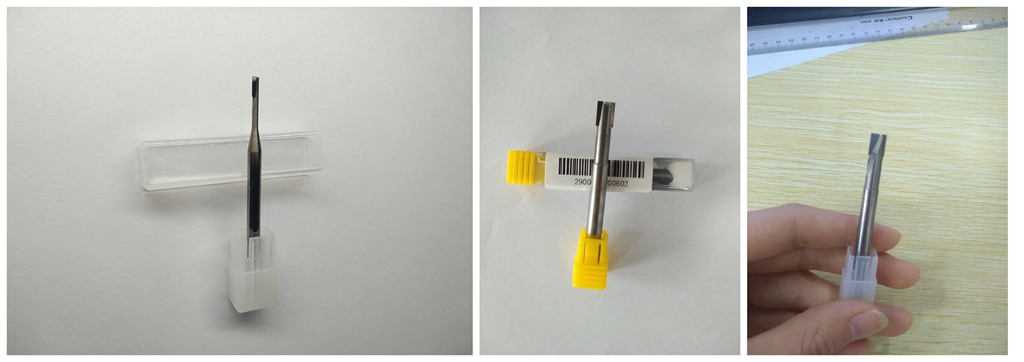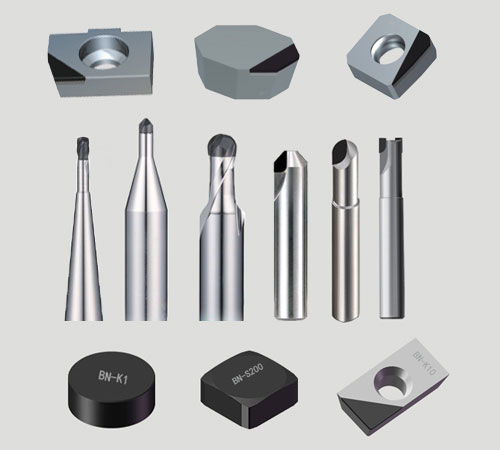Overview of PCD End Mill Cutters
PCD is a composite material composed of diamond particles sintered together under high temperature and pressure. The resulting material is extremely hard, making it ideal for cutting and machining abrasive materials like composites, ceramics, and non-ferrous metals. PCD end mill cutters are prized for their ability to maintain a sharp edge over extended periods, reducing the need for frequent tool changes and minimizing downtime in production environments.
PCD end mill cutters are used extensively in the aerospace industry, where precision is paramount. They are also employed in the automotive sector for machining lightweight materials like aluminum and carbon fiber composites. The electronics industry relies on PCD cutters for manufacturing semiconductor components and other delicate parts.

Traditional Methods for Manufacturing PCD End Mill Cutters
Traditionally, PCD end mill cutters were produced using basic sintering and grinding techniques. The sintering process involved combining diamond particles with a binding agent and applying heat and pressure to form a solid mass. This mass was then shaped and ground into the desired tool geometry.
While traditional methods were effective, they had limitations. The sintering process often produced PCD with impurities or uneven distribution of diamond particles, leading to reduced tool performance. Additionally, traditional grinding techniques could result in uneven edges or inconsistent tool shapes, affecting the precision of the final product.
Advanced Sintering Processes
One of the significant advancements in PCD manufacturing is the development of advanced sintering processes. These processes use higher temperatures and pressures to create denser PCD with fewer impurities. The advanced sintering method ensures a more uniform distribution of diamond particles, resulting in a stronger, more durable material.
The benefits of advanced sintering include improved tool life and greater resistance to wear and chipping. The increased density of the PCD enhances its performance, allowing manufacturers to create end mill cutters that can withstand the demands of high-speed machining. This advancement has also enabled the production of larger PCD segments, expanding the range of applications for PCD end mill cutters.
Laser Machining in PCD Manufacturing
Laser machining has become a game-changer in the manufacturing of PCD end mill cutters. This technology allows for high-precision cutting and shaping, enabling manufacturers to create complex geometries and intricate tool designs. Laser machining offers several advantages over traditional methods, including reduced tool wear and faster production times.
The use of lasers in PCD manufacturing allows for greater flexibility in tool design. Manufacturers can create custom geometries that were previously challenging to achieve with conventional methods. Additionally, laser machining reduces the need for multiple grinding steps, streamlining the production process and improving overall efficiency.
Laser machining also enhances the precision of PCD end mill cutters. The high level of accuracy achieved with lasers ensures that each tool meets strict quality standards, resulting in consistent performance and longer tool life. This technology has become essential for producing high-quality PCD end mill cutters used in critical applications like aerospace and electronics manufacturing.
Precision Grinding Techniques
Precision grinding is a crucial step in the manufacturing of PCD end mill cutters. After sintering and laser machining, the cutters must be ground to achieve the desired shape and edge sharpness. Advanced grinding technologies have significantly improved the quality of PCD end mill cutters, allowing for ultra-smooth surfaces and precise tolerances.
Innovations in grinding machinery have made it possible to achieve higher levels of precision and consistency. Computer Numerical Control (CNC) grinding machines, equipped with advanced sensors and automation capabilities, ensure that each cutter is ground to exact specifications. These machines can maintain consistent tolerances, reducing the risk of defects and ensuring uniformity across production batches.
Precision grinding techniques also contribute to the longevity of PCD end mill cutters. The smooth surfaces and sharp edges achieved through advanced grinding reduce friction during machining, extending the tool's life and improving its overall performance. This enhancement is particularly important in high-speed machining applications, where tool wear is a significant concern.
Benefits of Advanced Manufacturing Techniques
The adoption of advanced sintering processes, laser machining, and precision grinding has revolutionized the production of PCD end mill cutters. These techniques offer numerous benefits that translate into improved tool quality, performance, and cost-efficiency.
Advanced sintering processes create denser, more durable PCD, leading to longer-lasting tools that require less frequent replacement. Laser machining allows for greater design flexibility and higher precision, enabling manufacturers to create complex geometries and intricate tool shapes. Precision grinding ensures consistent tolerances and ultra-smooth surfaces, enhancing the performance and longevity of PCD end mill cutters.
These advancements also contribute to cost savings in manufacturing operations. Longer-lasting tools mean reduced downtime for tool changes, leading to increased productivity. The ability to produce high-quality PCD end mill cutters with greater efficiency reduces production costs and minimizes waste.
Conclusion
PCD end mill cutters are essential tools in various industries, valued for their hardness, durability, and precision. The latest advancements in manufacturing techniques, including advanced sintering processes, laser machining, and precision grinding, have significantly improved the quality and performance of these cutters.

These new methods allow manufacturers to create longer-lasting, high-performance PCD end mill cutters that meet the demands of modern manufacturing. As technology continues to evolve, we can expect further innovations in PCD manufacturing, leading to even greater efficiency and cost savings.
The future of PCD end mill cutters looks bright, with advancements in manufacturing techniques driving improved tool quality and performance. As industries continue to rely on precision machining, the importance of high-quality PCD end mill cutters will only grow, making these advancements critical for the success of modern manufacturing operations.